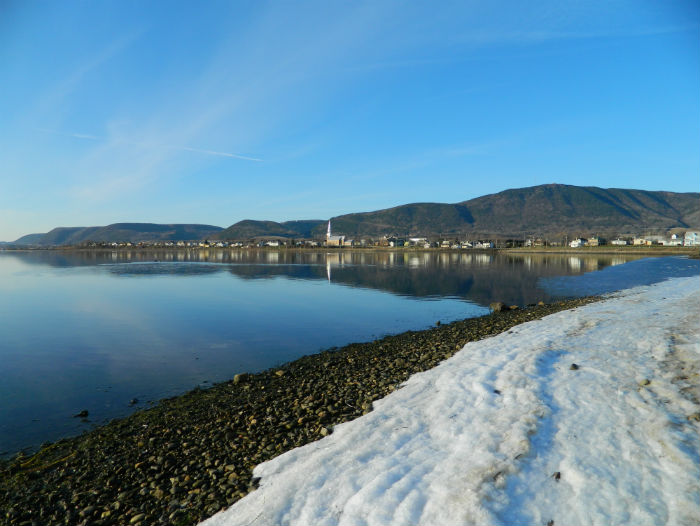
In the Baie des Chaleurs, west of Bonaventure, the town of Carleton-sur-Mer has become a unique holiday resort in the Gaspé Peninsula, thanks to its two sandbanks, home to a natural harbour with a mild microclimate, at the foot of Mount Saint-Joseph. It is certainly the safety and charm of this barachois that attracted the Acadian founders of the city in the spring of 1767…
The Acadians were headed by a certain Charles Dugas, who came from Bonaventure. In August 1766, Charles Dugas jointly with Benjamin LeBlanc, his Acadian son-in-law, signed a petition addressed to the lieutenant-governor of the province of Quebec, Guy Carleton. on behalf of 25 Bonaventure residents. The two co-signatories requested permission to settle “from the entrance of the Restigouche River to Cap-Noir (New Richmond)” so they could move there in the upcoming spring. Their intention was clearly to live on fishing and farming and to develop trade in the area, with loyalty to the King and the local lord. However, they did not wait for a response from the Provincial Council before installing their families on this parcel of land beautifully named Tracadièche. Why Tracadièche? It turned out that this site was also a traditional territory of the Micmacs…
Where the herons are
Tracadièche comes from Tracadigash, a Micmac toponym meaning “place where there are herons” or “place of gathering”. In the summer months, the Micmacs came to gather and fish in the shelter of the barachois. On the first day of the summer, they would climb the mountain to celebrate the longest day of the year. Today, the names of the place recall the town’s origins. From Tracadigash point, at the entrance to the barachois, we can see the island of Herons (New Brunswick). It is near this point that Jacques Cartier met 300 Micmacs in July 1534. Enjoying the agreeable warmth of the bay he named it… “Baie des Chaleurs”. Let’s now go back to the foundation of the town…

The economic and commercial heart of the village of Tracadièche developed on the sandbank (now Carleton bank). In 1777, during its first census, the village numbered 255 inhabitants, most of Acadian origin. Among the residing families were those of Benjamin Alain, Joseph Boudreau, François Comeau, Charles Dugas and Benjamin LeBlanc, all from Bonaventure. Father Joseph Mathurin Bourg was also a resident of Tracadièche. In 1773, the Bishop of Quebec entrusted him with the mission of Baie des Chaleurs and that of the Maritime Provinces. Deported young to Virginia and again to England, Father Bourg became the first Acadian priest carrying missionary work for Acadians. In the 1780s, he could clearly see the growing influence of the English-speaking community, so that Tracadièche became Carleton in circa 1787. Yet, important colonies… of blue herons can still be seen in the bay today.
Here are some pioneering Acadian families of Carleton in 1777 (source: Bona Arsenault): Benjamin Alain, 45 years of age, married to Marie-Rose Bujold, 35 years old; Joseph Boudreau, 56, widower of Rosalie Arsenault; François Comeau, 31, married to Marie LeBlanc 30; Charles Dugas, 37, married to Félicité Bujold, 29; Benjamin LeBlanc, 37, married to Marie Dugas, 32…